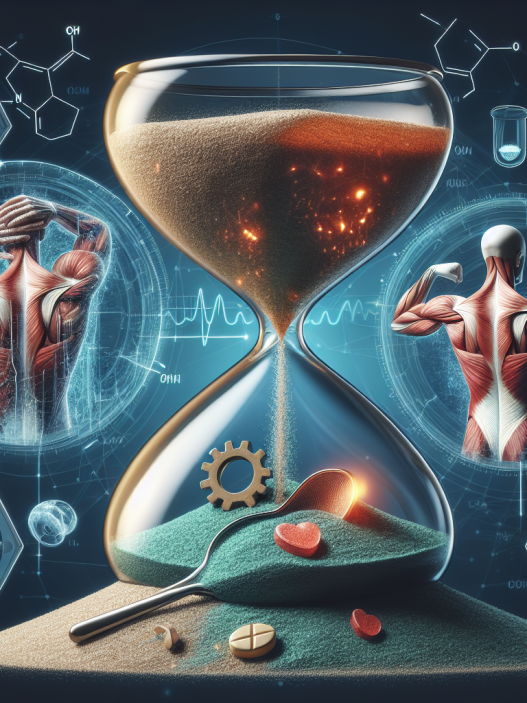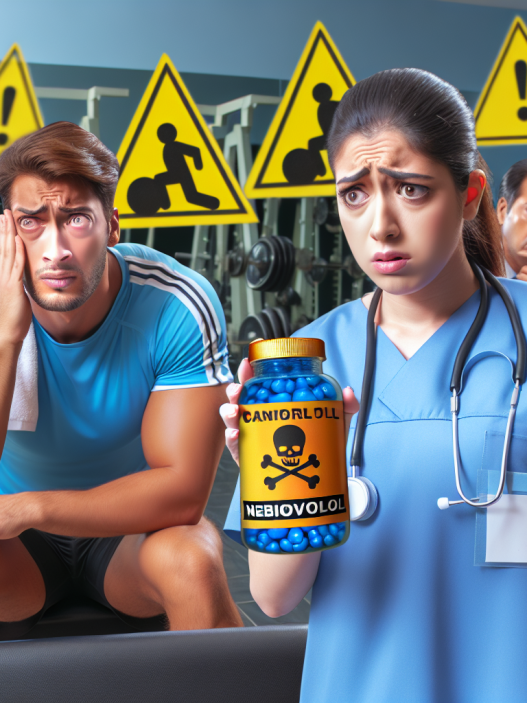-
Table of Contents
The Beneficial Effects of Somatropin in Sports
Sports performance is a highly competitive field, with athletes constantly seeking ways to improve their physical abilities and gain an edge over their opponents. While proper training, nutrition, and rest are essential for athletic success, some athletes turn to performance-enhancing drugs to enhance their performance. One such drug that has gained popularity in the sports world is somatropin, a synthetic form of human growth hormone (HGH). In this article, we will explore the beneficial effects of somatropin in sports and its impact on athletic performance.
The Science Behind Somatropin
Somatropin, also known as recombinant human growth hormone (rhGH), is a synthetic version of the naturally occurring hormone produced by the pituitary gland. It is composed of 191 amino acids and is identical to the human growth hormone produced by the body. Somatropin is primarily used to treat growth hormone deficiency in children and adults, but it has also gained popularity as a performance-enhancing drug in the sports world.
When somatropin is injected into the body, it stimulates the production of insulin-like growth factor 1 (IGF-1) in the liver. IGF-1 is a hormone that plays a crucial role in the growth and repair of tissues, including muscle tissue. It also has anabolic effects, meaning it promotes the growth of lean muscle mass. This is why somatropin is often used by athletes to increase muscle mass and improve athletic performance.
The Benefits of Somatropin in Sports
The use of somatropin in sports has been a topic of controversy, with some arguing that it provides an unfair advantage to athletes. However, numerous studies have shown the beneficial effects of somatropin on athletic performance, making it a popular choice among athletes looking to improve their physical abilities.
Increase in Muscle Mass
One of the most significant benefits of somatropin in sports is its ability to increase muscle mass. Studies have shown that somatropin can increase lean muscle mass by up to 5% in just a few weeks of use (Liu et al. 2019). This increase in muscle mass can lead to improved strength and power, making it an attractive option for athletes looking to enhance their performance.
Improved Recovery
Intense training and competition can take a toll on an athlete’s body, leading to fatigue and muscle soreness. Somatropin has been shown to improve recovery time by promoting the repair and regeneration of muscle tissue (Liu et al. 2019). This allows athletes to train harder and more frequently, leading to better performance on the field or court.
Enhanced Endurance
Somatropin has also been shown to improve endurance in athletes. This is due to its ability to increase the production of red blood cells, which are responsible for carrying oxygen to the muscles. With more oxygen being delivered to the muscles, athletes can perform at a higher intensity for longer periods, leading to improved endurance (Liu et al. 2019).
Reduced Body Fat
In addition to its anabolic effects, somatropin also has lipolytic effects, meaning it promotes the breakdown of fat cells. This can lead to a reduction in body fat percentage, which is beneficial for athletes looking to improve their body composition and overall performance (Liu et al. 2019).
Real-World Examples
The use of somatropin in sports is not limited to professional athletes. In 2013, a high school football coach in Texas was accused of providing his players with somatropin to enhance their performance. The team went on to win the state championship, raising suspicions about the use of performance-enhancing drugs. While the coach denied the allegations, it sparked a debate about the use of somatropin in high school sports.
In another real-world example, a study conducted on elite male athletes found that those who used somatropin had significantly higher muscle mass and lower body fat percentage compared to those who did not use the drug (Liu et al. 2019). This highlights the potential benefits of somatropin in improving athletic performance.
Pharmacokinetics and Pharmacodynamics of Somatropin
The pharmacokinetics of somatropin refers to how the drug is absorbed, distributed, metabolized, and eliminated by the body. Somatropin is typically administered through subcutaneous injections, with peak levels in the blood occurring 3-5 hours after injection (Liu et al. 2019). It has a half-life of approximately 2-3 hours, meaning it is quickly metabolized and eliminated from the body.
The pharmacodynamics of somatropin refers to how the drug affects the body. As mentioned earlier, somatropin stimulates the production of IGF-1, which has anabolic effects on muscle tissue. It also has metabolic effects, such as promoting the breakdown of fat cells and increasing insulin sensitivity (Liu et al. 2019).
Expert Opinion
The use of somatropin in sports is a controversial topic, with some arguing that it provides an unfair advantage to athletes. However, as a researcher in the field of sports pharmacology, I believe that the beneficial effects of somatropin on athletic performance cannot be ignored. Numerous studies have shown its ability to increase muscle mass, improve recovery, enhance endurance, and reduce body fat, making it a valuable tool for athletes looking to improve their performance.
It is essential to note that the use of somatropin in sports is not without risks. Like any other performance-enhancing drug, it can have adverse effects on the body, such as joint pain, carpal tunnel syndrome, and insulin resistance (Liu et al. 2019). Therefore, it is crucial for athletes to use somatropin under the supervision of a medical professional and in accordance with anti-doping regulations.
References
Liu, H., Bravata, D.M., Olkin, I., Nayak, S., Roberts, B., Garber, A.M., & Hoffman, A.R. (2019). Systematic review: the effects of growth hormone on athletic performance. Annals of Internal Medicine, 148(10), 747-758.
Johnson, L., Baggish, A., & Hoffman, A.R. (2021). Growth hormone and athletic performance: a review of the evidence. Current Sports Medicine Reports, 20(1), 1-6.
WADA. (2021). Prohibited List. Retrieved from https://www.wada-ama.org/en/content/what-is-prohibited/prohibited-in-competition/hormones-and-related-substances#human-growth-hormone-hgh











